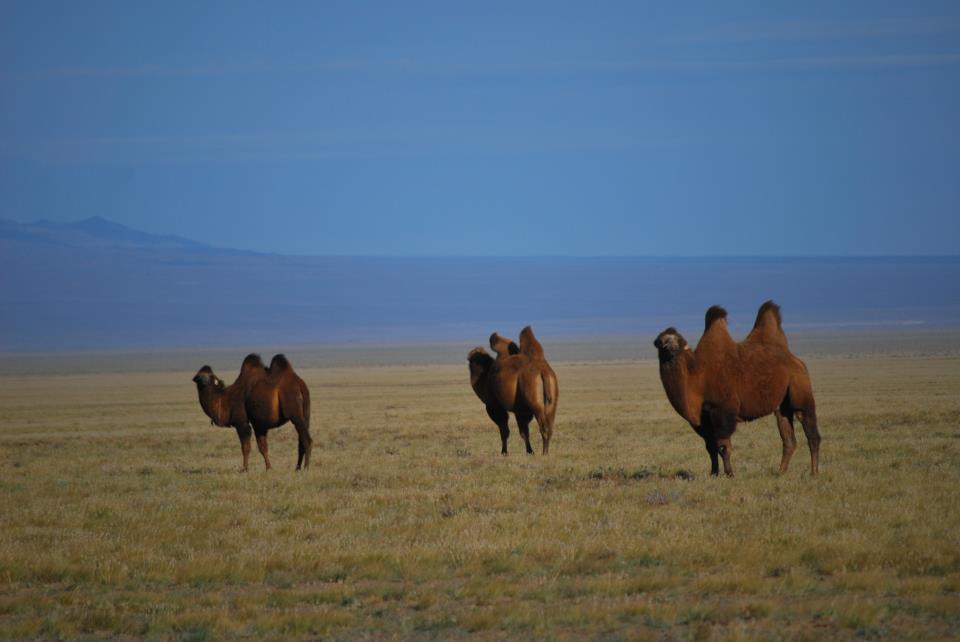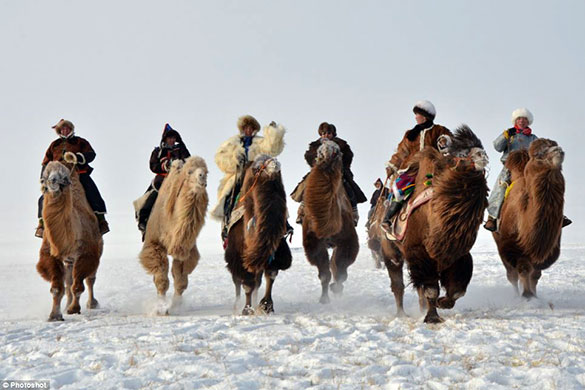MONGOLIAN CAMEL FESTIVAL, 2023
Date: March 6th and 7th
Venue: Bulgan village, South Gobi province
Date: March 6th and 7th
Venue: Bulgan village, South Gobi province
Ten Thousand Camel festival, annually held in the Gobi Desert of Mongolia on 6th and 7th of March, is one of the most famous winter festivals in the world. This festival was first initiated in 1997 by the locals of Umnugobi (South Gobi) province to protect the 2-humped Bactrian camel species, increase the population of them, honor camel herders, pass the rich Mongolian camel breeding heritage to the next generation and to promote winter tourism in Mongolia. It is a celebration of the way of life in the harsh Gobi and a chance for the local herders to come together as a community at what can be quite an isolating time of year.
It’s an entertaining 2-day of event that features various contests including camel races, camel polo competitions even a camel beauty pageant. Nomads from far and near wear their best deels /Mongolian traditional outfits/ and ride their best camels to attend the festival as it’s their pride and a big celebration for them. It is a great opportunity to explore the cultural heritage of camel herders and enjoy to photograph the traditional colorful costumes.

Mongolia is home to approximately 500000 Bactrian camels. Two humped -Bactrian camels are native to the Mongolian Gobi Desert, the most extreme environment and challenging weather conditions with +40C in summer while the winter temperature can reach as low as -40C.
Camels are perfectly adapted this changeable climate and, they have an advantage to live in this temperature with wide flat feet could easily walk on desert sand as well as in soft snow. Camels also have survived in desert with their thick lips allow them to eat plants that most other herds can’t, and two rows of long lashes protect their eyes from blowing sand, and sand up nose also can shut their nostrils during sand storms. Therefore, large fat filled humps can provide vital nutrients when food and water is scarce. Camels are only mammal which can survive for longer without water because of the fat filled humps release water. In addition, their humps allow camels to dissipate heat easily in hot climate, either storing fat as a layer of insulation to protect them against the low temperatures.

These remarkable creatures have a clever way of keeping toasty when the coat season is starting. The way to adapt -40C is to rely on a super thick coat and, the warm coat gets shed in the spring time. Camels are sheered in the end of spring. Wool is used for rope which encircles Traditional Mongolian Ger dwelling (yurt), garment, socks and their woolly coat is mostly exported to China as much as factories make fine wool suits and coats. Then in summer, they do well with virtual bald body and, this very odd looking animal can drink 40 litters of water in hot weather.
Camels play essential role in the transportation. They can carry 250kg on their back and travel for extremely long distances without require rest and water.
To highlight, the largest camel race involved 1,108 participants and was achieved by The Administrative Office of the Governor of Umnogovi aimag (Mongolia), in Dalanzadgad city, Umnogovi aimag, Mongolia, on 7 March 2016.
The race was just over 15 km long with the fastest finishing in 35 min 12 sec and the whole race completed in 1 hr 8 min. The race was organized with the purpose of increasing the population/use of domestic Bactrian camels in Mongolia.
